Experimental objectives:
• master the interface timing of parallel DAC and ADC
• DDS is used to synthesize signals, which are output through DAC
• signal acquisition with ADC
• use SignalTAP to observe the signal in time domain
• observe the signal in the frequency domain using Matlab
Original experiment
50M crystal oscillator - through the phase-locked loop in FPGA chip - frequency doubling to obtain 80MHz DAC clock and frequency division to obtain 20MHz ADC clock
DAC clock: use the logic of FPGA to invert the internal 80MHz clock as the DAC chip clock to meet the establishment hold timing of DAC data
ADC clock: the ADC clock is also inverted as the driving clock of ADC interface logic

Write clock management module, DDS module, DAC module and ADC module respectively, and generate corresponding components
Connect the circuit and assign pins
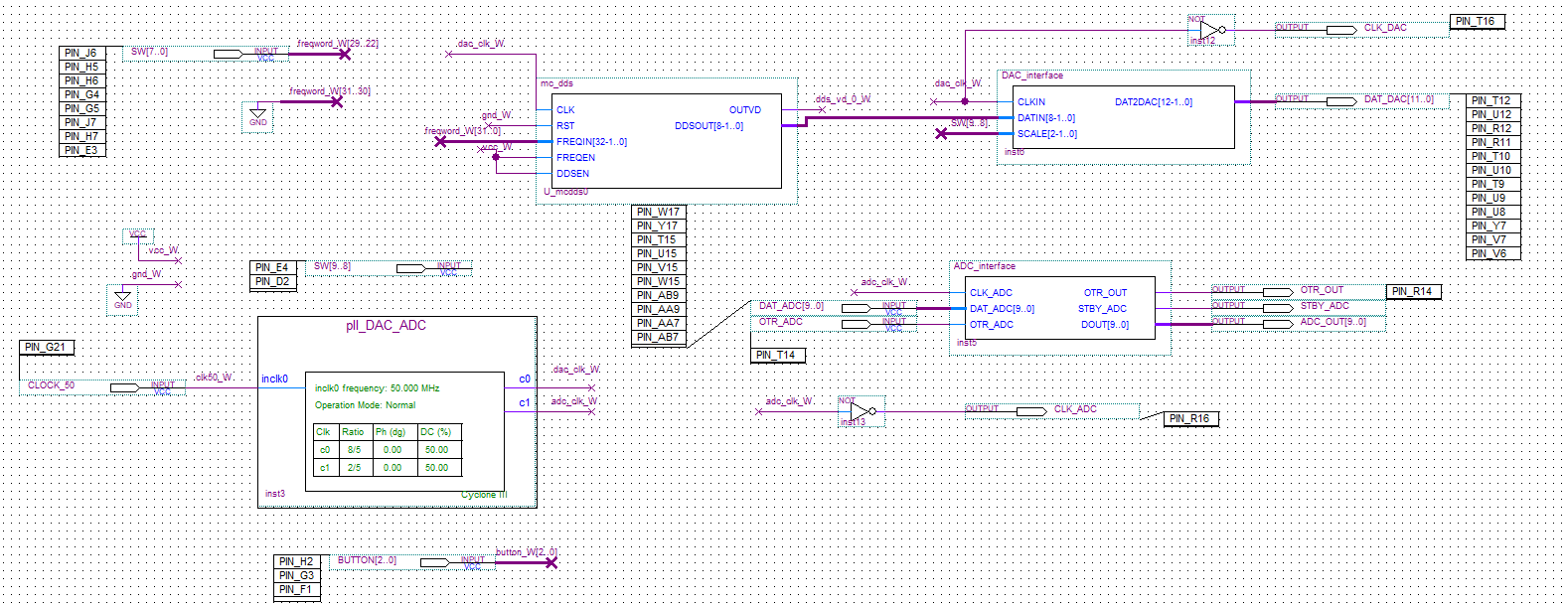
- In this design, a PLL generates 80MHz DAC clock and 20MHz ADC clock from 50MHz crystal oscillator
- A single period DDS generates a complementary sine wave, which is converted into an unsigned sine wave and sent to the DAC
- The dial switch SW9 and SW8 are used to control the output amplitude of the DAC
- The remaining SW switches are used to control the DDS frequency word
Connect ADC and DAC with SMA coaxial cable
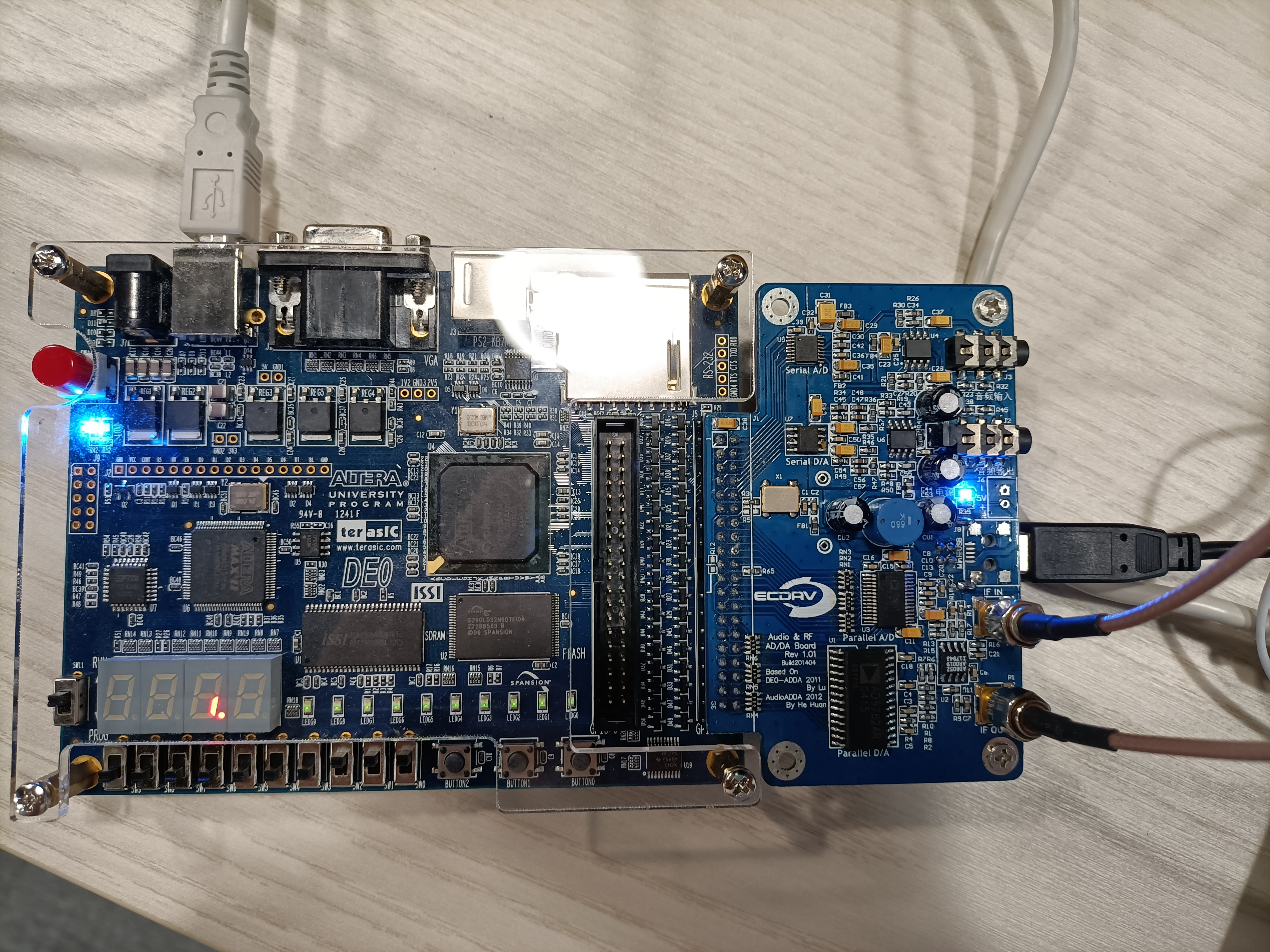
Grab ADC

ADC

dac
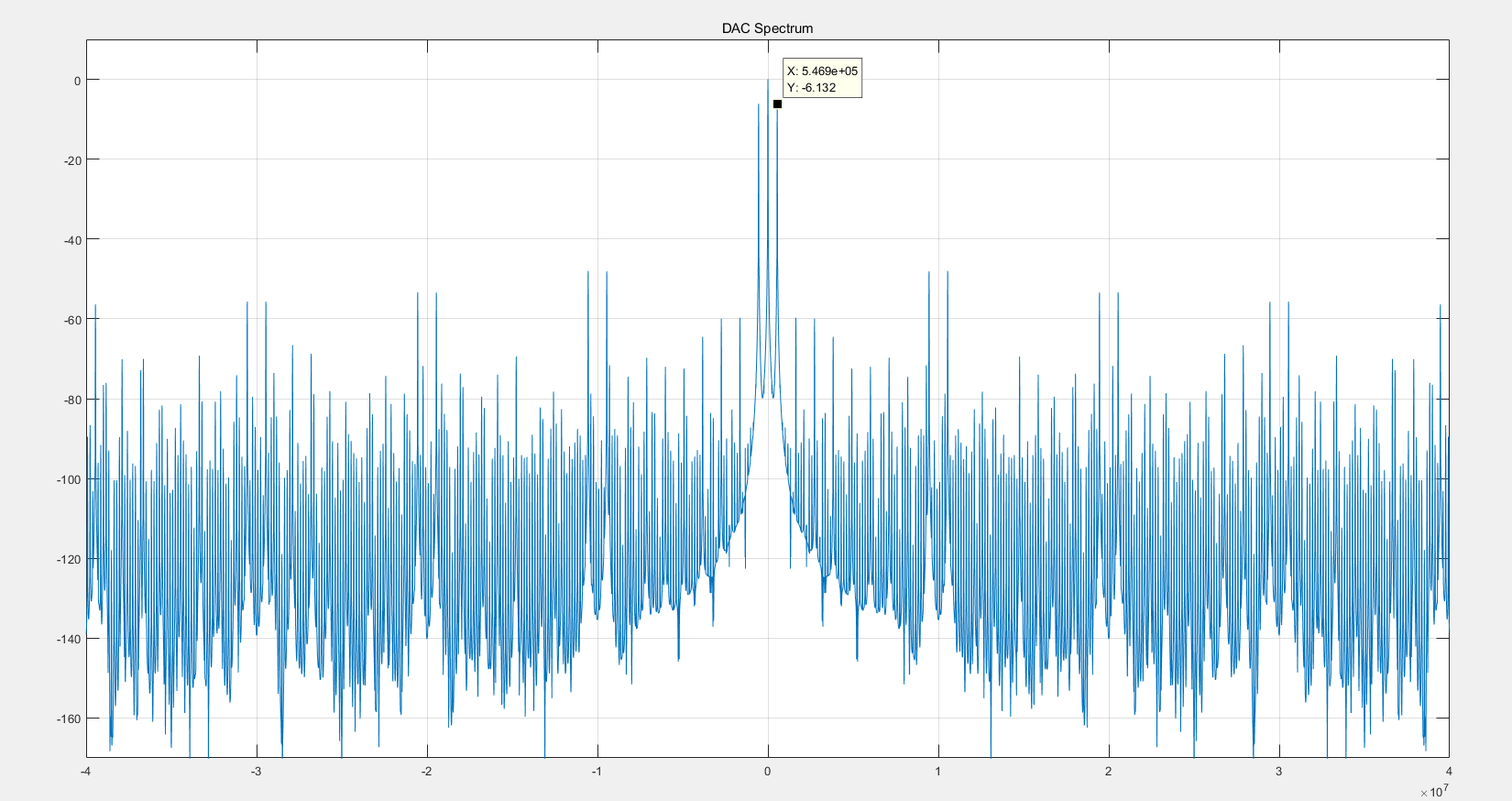
Answer to thinking questions

- It conforms to Nyquist theory. According to the spectrum diagram analyzed by matlab, the maximum frequency of analog signal is 0.5MHz, while the clock of ADC is 20MHz, which conforms to Nyquist theory
- It can be seen that the lowest noise of ADC is greater than the output of DAC.
- ADC is a process of sampling, holding, quantization and coding of analog signals, which makes them easier to store and process.
Supplementary knowledge


Student experiment
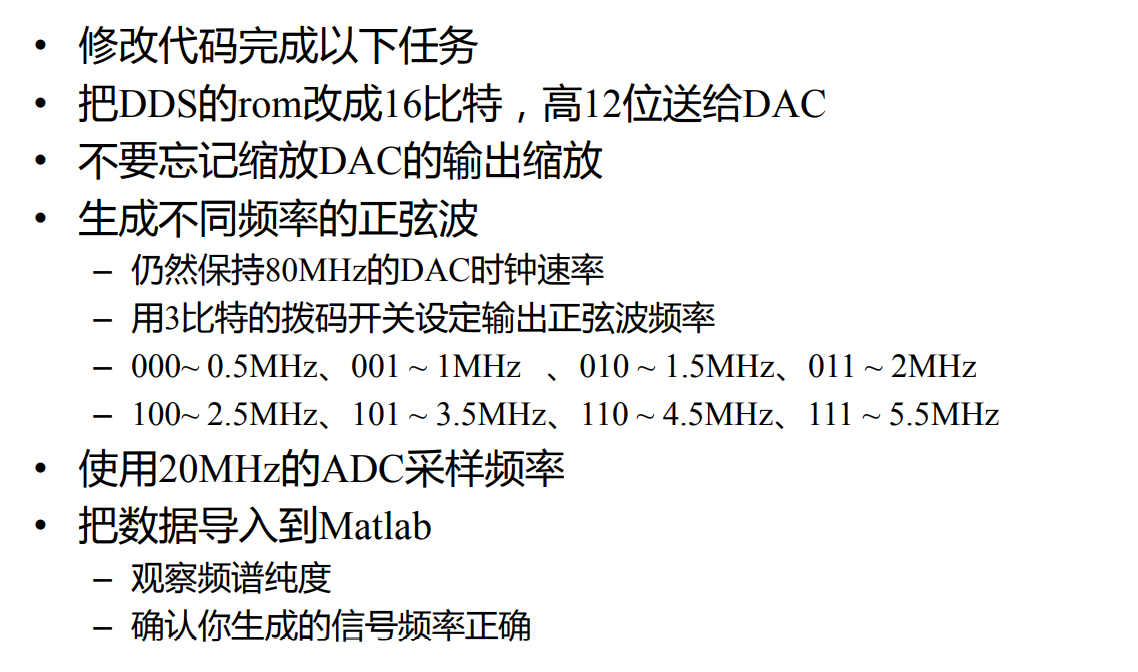
1. rom is changed to 16 bits, and the wave table file is automatically generated by matlab

DDS code
The data and output are changed to 16 bits, and then different frequency words are assigned to different key inputs. The frequency word calculation method is
Then convert it to binary and assign it to freqin_R
module mc_dds(
CLK , // clock posedge
RST , // reset posedge
FREQIN, // input frequency word
FREQEN, // frequency word input enable
DDSEN , // multi-cycle dds work enable
OUTVD , // dds output valid
DDSOUT); // dds output wave
input CLK ;
input RST ;
input [32-1:0] FREQIN;
input FREQEN;
input DDSEN ;
output OUTVD ;
output [11 :0] DDSOUT;
// work enable delay line
reg ddsen_R1, ddsen_R2, ddsen_R3;
reg [32-1:0] freqin_R ;
reg [32-1:0] phase_acc_R ;
reg [16-1:0] DDSOUT ;
wire [16-1:0] rom_rdW ; // rom read data
wire [7-1:0] rom_raW ; // rom read address
// code template
// always @ (posedge CLK or posedge RST) begin
// if(RST) begin
// end
// else begin
// end
// end
always @ (posedge CLK or posedge RST) begin
if(RST) begin
ddsen_R1 <= 1'b0;
ddsen_R2 <= 1'b0;
ddsen_R3 <= 1'b0;
end
else begin
ddsen_R1 <= DDSEN ;
ddsen_R2 <= ddsen_R1;
ddsen_R3 <= ddsen_R2;
end
end
assign OUTVD = ddsen_R3;
// dds working pipeline
// OUTVD
// DDSEN | ddsen_R1 |ddsen_R2 |ddsen_R3
// | phase_acc_R |
// | rom_raW | rom_rdW | DDSOUT
always @ (posedge CLK or posedge RST) begin
if(RST) begin
phase_acc_R <= 0;
freqin_R <= 0;
end
else begin
if(FREQEN) begin
case(FREQIN[24:22])
3'b000:freqin_R <=32'b00000001100110011001100110011010;
3'b001:freqin_R <=32'b00000011001100110011001100110011;
3'b010:freqin_R <=32'b00000100110011001100110011001101;
3'b011:freqin_R <=32'b00000110011001100110011001100110;
3'b100:freqin_R <=32'b00001000000000000000000000000000;
3'b101:freqin_R <=32'b00001011001100110011001100110011;
3'b110:freqin_R <=32'b00001110011001100110011001100110;
3'b111:freqin_R <=32'b00010001100110011001100110011010;
endcase // if(FREQEN)
end // if(FREQEN)
if(DDSEN) begin
phase_acc_R <= phase_acc_R + freqin_R;
end // if(DDSEN)
if(ddsen_R2) begin
DDSOUT <= rom_rdW;
end
end
end
assign rom_raW = phase_acc_R[32-1: 32-1-7+1];
sine_rom U_sine_rom(
.CLK (CLK ), // clock
.RA (rom_raW ), // read address
.RD (rom_rdW )); // read data
endmodule // mc_dds();
DAC code
Note that the input becomes 12 bits and the 2 Complement becomes an unsigned number
module DAC_interface( CLKIN , // input clk DATIN , // input data SCALE , // scale factor, right shift the data DAT2DAC ); // data to dac input CLKIN; input [12-1:0] DATIN ; input [2-1:0] SCALE ; output [12-1:0] DAT2DAC ; reg [12-1:0] DAT2DAC ; reg [12-1:0] datin_R1; always @ (posedge CLKIN) begin datin_R1 [11] <= ~ DATIN[11]; // inverse the msb to unsigned datin_R1 [10: 0] <= DATIN[10:0]; DAT2DAC <= (datin_R1 >> SCALE); end endmodule
ADC module
module ADC_interface( CLK_ADC , // adc clk DAT_ADC , // input data, from adc OTR_ADC , // from adc , signal out of range flag OTR_OUT , // output otr flag STBY_ADC , // adc stand by, set 0 make adc running DOUT ); // data out input CLK_ADC ; input [9:0] DAT_ADC ; input OTR_ADC ; output OTR_OUT ; output STBY_ADC ; output [9:0] DOUT ; reg [9:0] DOUT ; reg OTR_OUT; always @ (posedge CLK_ADC) begin DOUT <= DAT_ADC ; OTR_OUT <= OTR_ADC; end assign STBY_ADC = 1'b0; endmodule
Save, generate components, connect circuits, assign pins
(the place circled in the figure below indicates that the high 12 bits are given to the DAC and the low 4 bits are suspended)
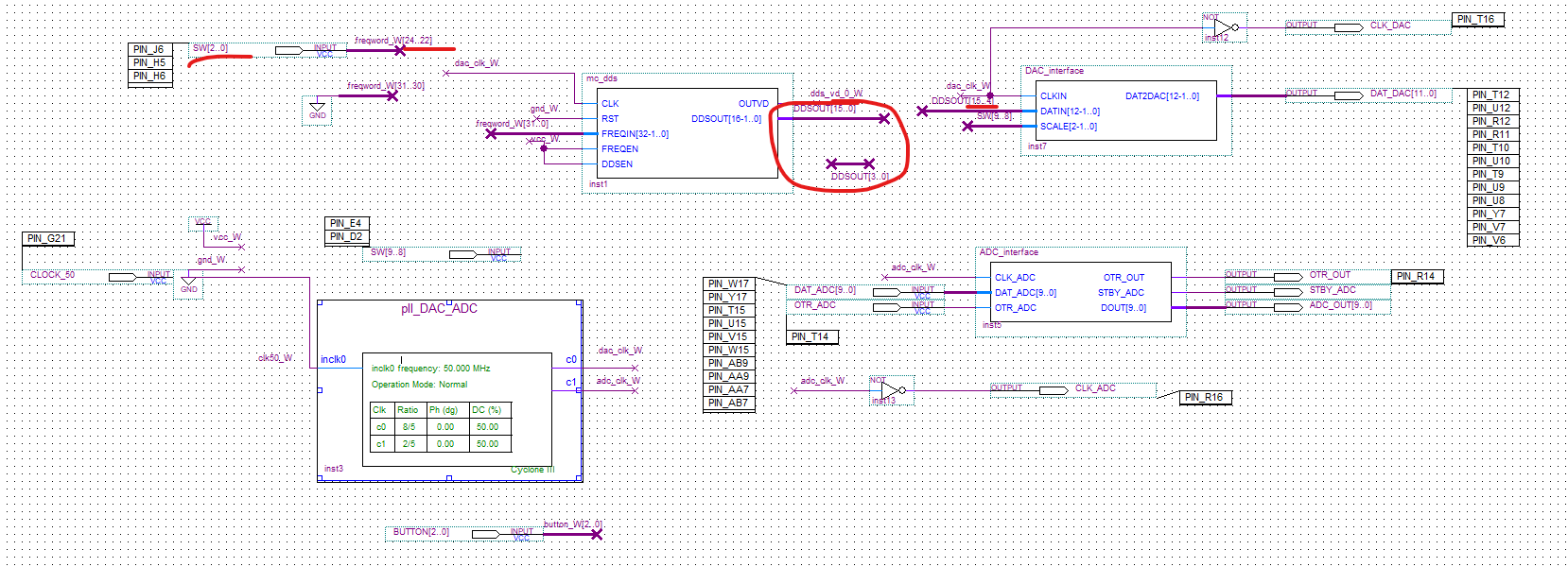
Next, compile and download, and grab the data with signaltap
When the key is 011
 Observe with ADC clock
Observe with ADC clock
ADC spectrum is observed with ADC clock, and the frequency is 2M
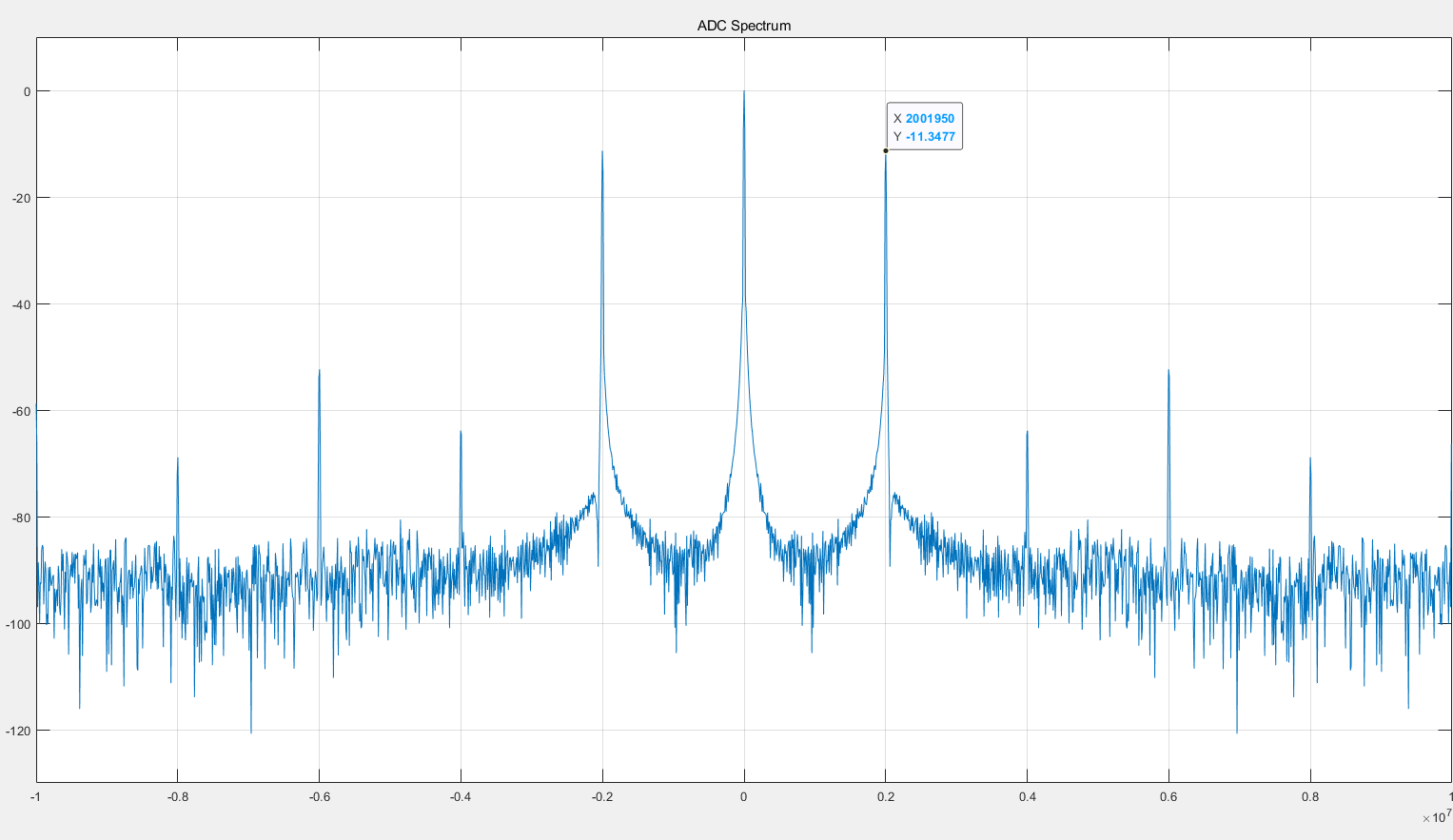
The DAC spectrum is observed based on the DAC clock, and the frequency also reaches the required 2M
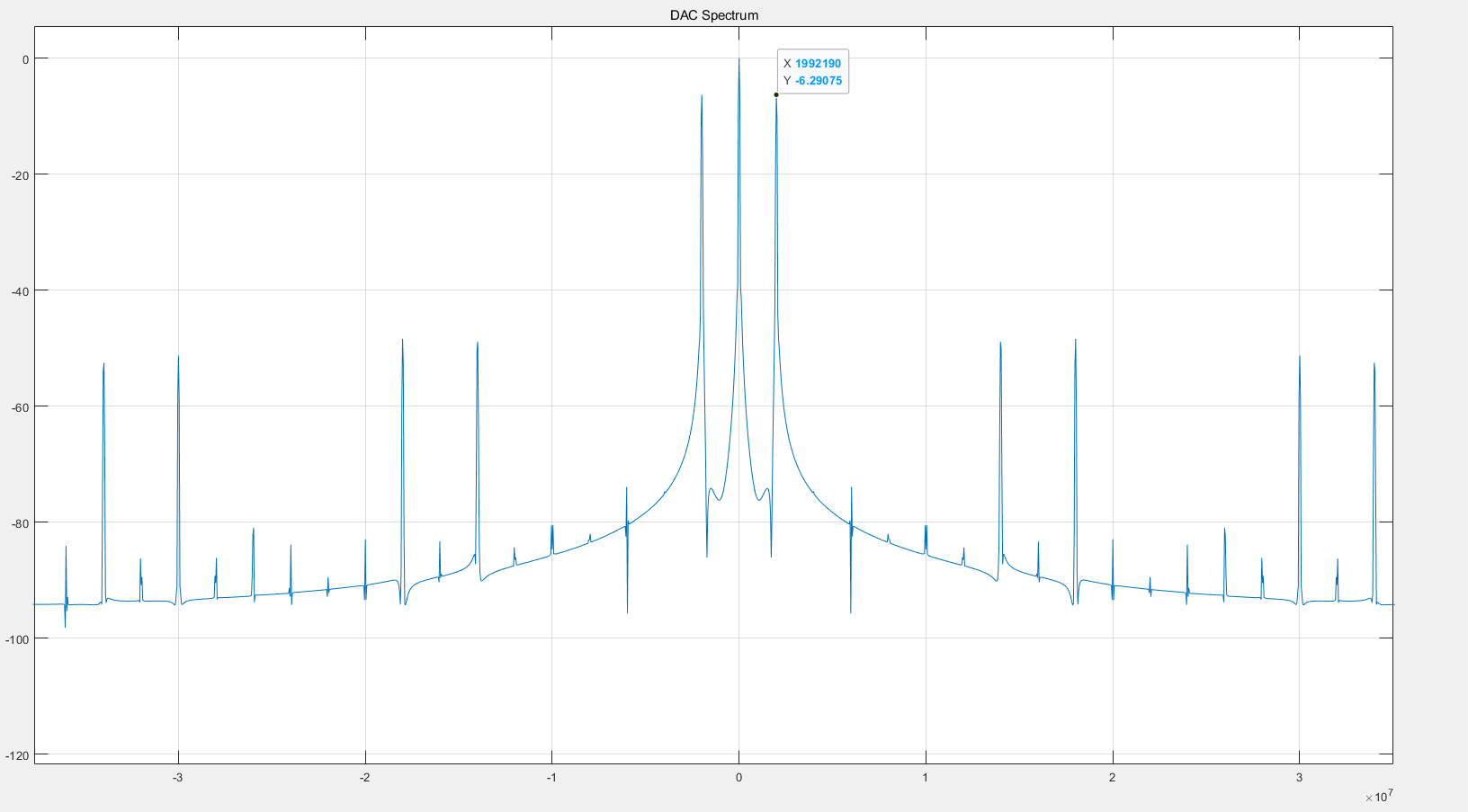
Connect to the oscilloscope and observe the frequency. The result is correct and 2M
The spectral gain of other clutter is lower than 60dB, and the spectral purity is relatively good
Thinking questions
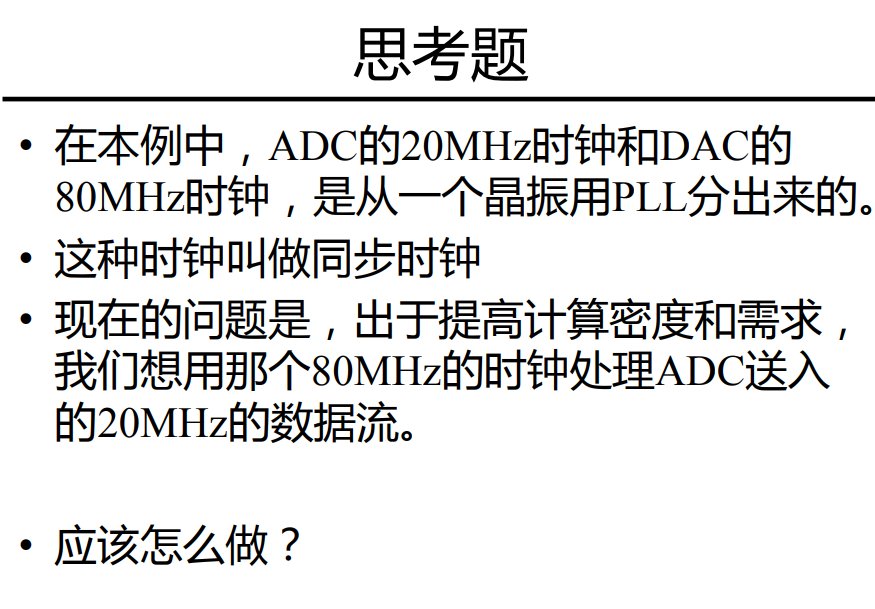


Visible, dat_ At ADC is the 20M data stream of ADC, which can be processed by connecting 80M clock
Connect the 80M DAC clock to the ADC clock,
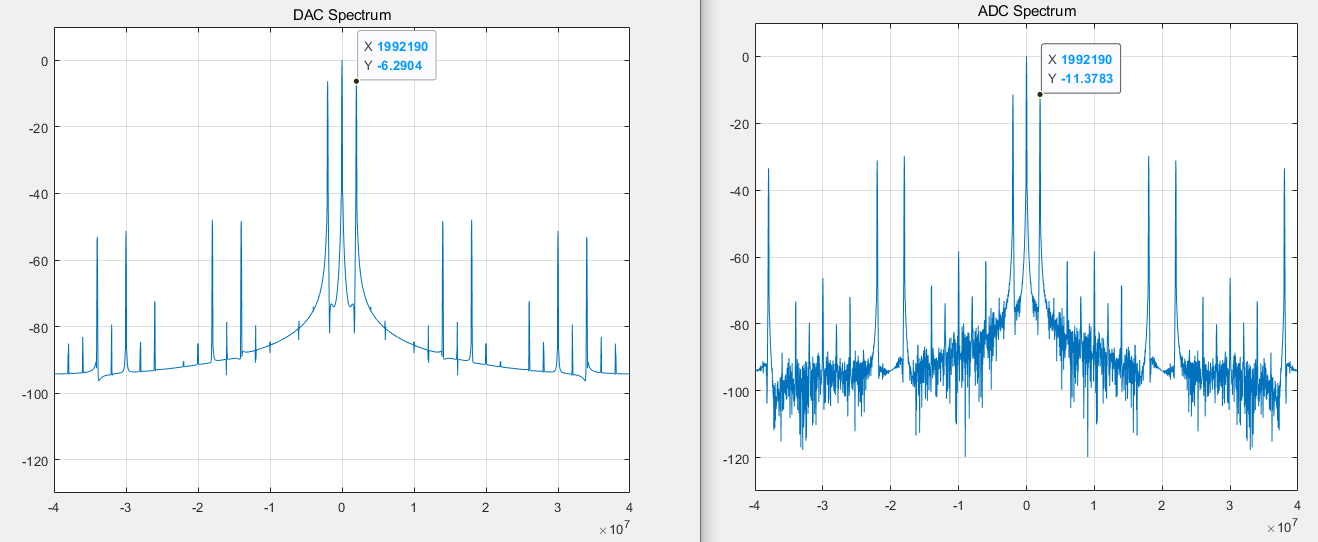
It can be found that when the sampling clock frequency is higher, the envelope of Sa function is more obvious. However, the spectral purity of ADC is not very high. Filters can be added to filter out clutter